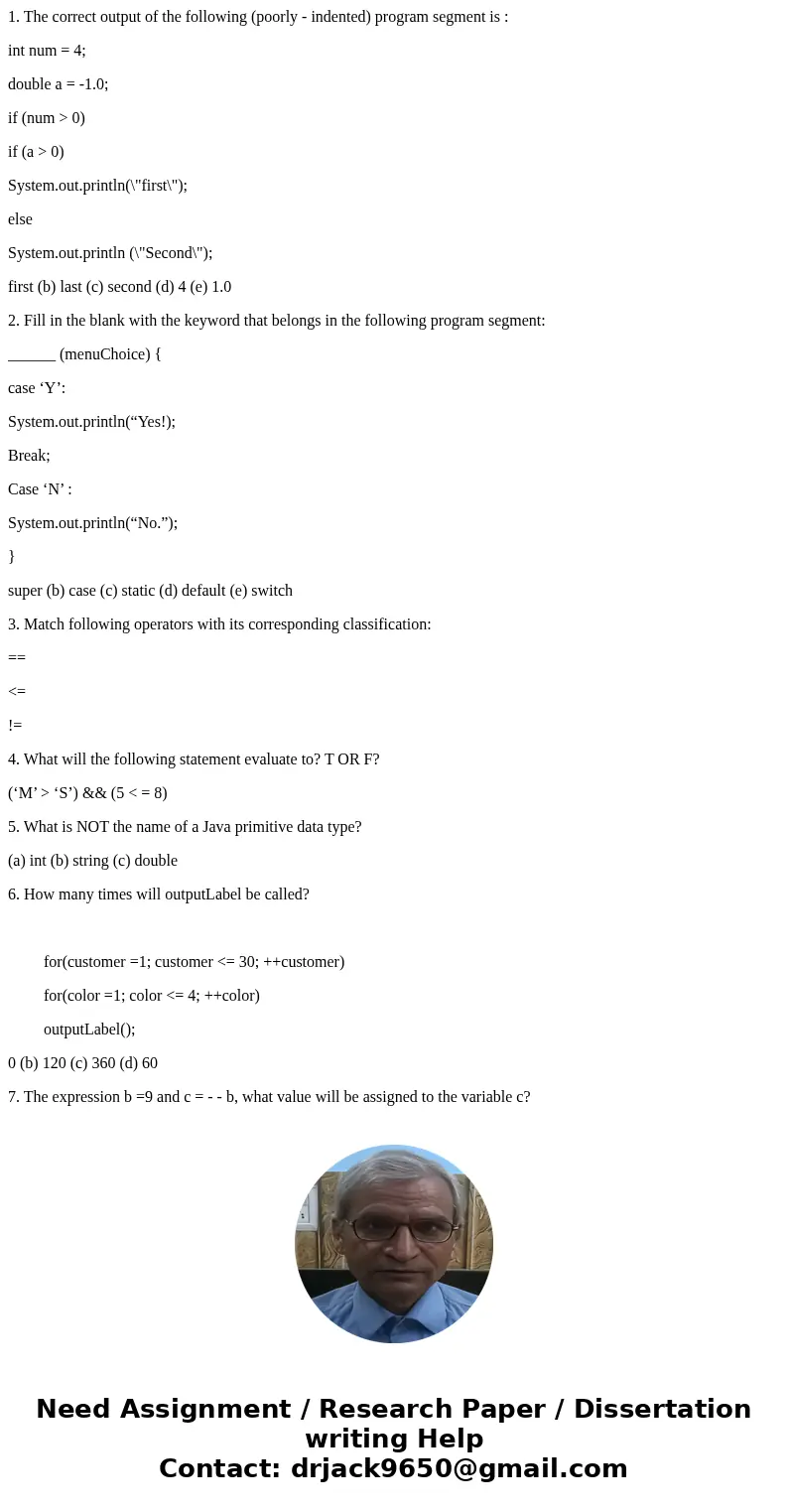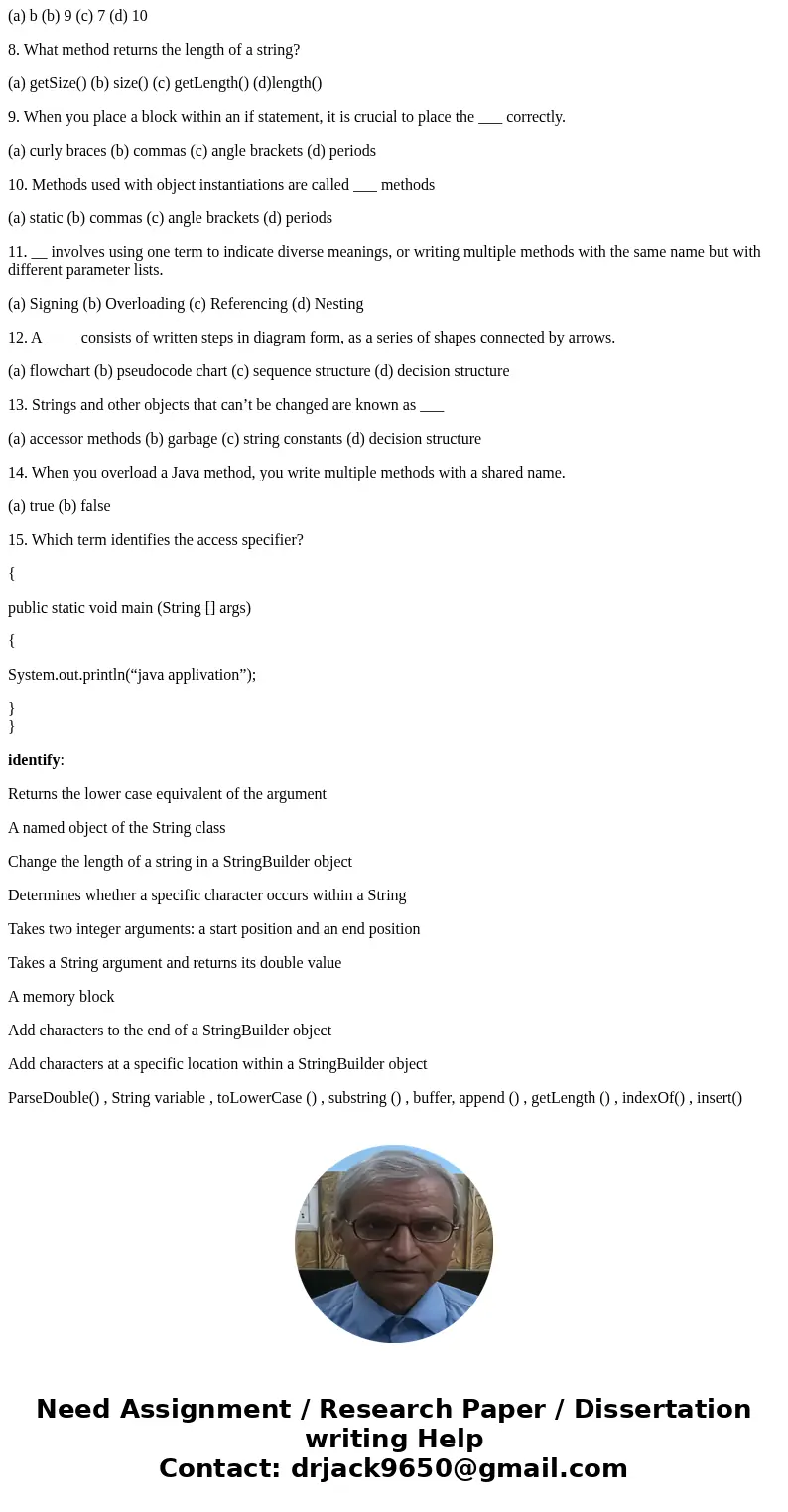1 The correct output of the following poorly indented progr
1. The correct output of the following (poorly - indented) program segment is :
int num = 4;
double a = -1.0;
if (num > 0)
if (a > 0)
System.out.println(\"first\");
else
System.out.println (\"Second\");
first (b) last (c) second (d) 4 (e) 1.0
2. Fill in the blank with the keyword that belongs in the following program segment:
______ (menuChoice) {
case ‘Y’:
System.out.println(“Yes!);
Break;
Case ‘N’ :
System.out.println(“No.”);
}
super (b) case (c) static (d) default (e) switch
3. Match following operators with its corresponding classification:
==
<=
!=
4. What will the following statement evaluate to? T OR F?
(‘M’ > ‘S’) && (5 < = 8)
5. What is NOT the name of a Java primitive data type?
(a) int (b) string (c) double
6. How many times will outputLabel be called?
for(customer =1; customer <= 30; ++customer)
for(color =1; color <= 4; ++color)
outputLabel();
0 (b) 120 (c) 360 (d) 60
7. The expression b =9 and c = - - b, what value will be assigned to the variable c?
(a) b (b) 9 (c) 7 (d) 10
8. What method returns the length of a string?
(a) getSize() (b) size() (c) getLength() (d)length()
9. When you place a block within an if statement, it is crucial to place the ___ correctly.
(a) curly braces (b) commas (c) angle brackets (d) periods
10. Methods used with object instantiations are called ___ methods
(a) static (b) commas (c) angle brackets (d) periods
11. __ involves using one term to indicate diverse meanings, or writing multiple methods with the same name but with different parameter lists.
(a) Signing (b) Overloading (c) Referencing (d) Nesting
12. A ____ consists of written steps in diagram form, as a series of shapes connected by arrows.
(a) flowchart (b) pseudocode chart (c) sequence structure (d) decision structure
13. Strings and other objects that can’t be changed are known as ___
(a) accessor methods (b) garbage (c) string constants (d) decision structure
14. When you overload a Java method, you write multiple methods with a shared name.
(a) true (b) false
15. Which term identifies the access specifier?
{
public static void main (String [] args)
{
System.out.println(“java applivation”);
}
}
identify:
Returns the lower case equivalent of the argument
A named object of the String class
Change the length of a string in a StringBuilder object
Determines whether a specific character occurs within a String
Takes two integer arguments: a start position and an end position
Takes a String argument and returns its double value
A memory block
Add characters to the end of a StringBuilder object
Add characters at a specific location within a StringBuilder object
ParseDouble() , String variable , toLowerCase () , substring () , buffer, append () , getLength () , indexOf() , insert()
Solution
identify:
Returns the lower case equivalent of the argument -- toLowerCase ()
A named object of the String class -- String variable
Change the length of a string in a StringBuilder object
Determines whether a specific character occurs within a String -- indexOf()
Takes two integer arguments: a start position and an end position -- substring()
Takes a String argument and returns its double value -- ParseDouble()
A memory block -- buffer
Add characters to the end of a StringBuilder object -- append()
Add characters at a specific location within a StringBuilder object -- insert()



 Homework Sourse
Homework Sourse